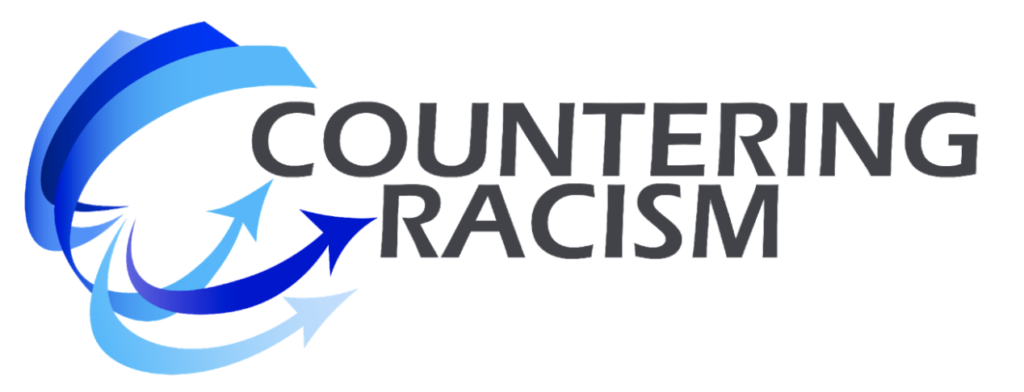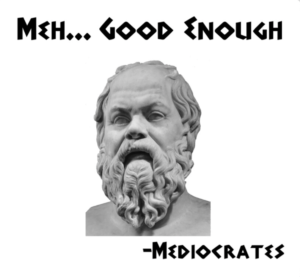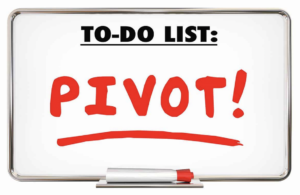The 3 Dangerous C-Suite Pitfalls
Effective DEI leadership is always about leverage – the critical success factors (CSFs) on which to focus and the dangerous pitfalls to avoid. The sections on leading Phases I and II focus on the CSFs for each phase. This section focuses on natural, and very dangerous, pitfalls that must be avoided by C-Suites in leading diversity initiatives. These pitfalls are just part of the territory. If addressed directly they can be avoided. However, if they are not avoided, the organization or community will be on a path to mediocrity.
Pitfall #1 – “Game Over”
The C-Suite Delegates too Much Responsibility
too Quickly & Disengages
DEI initiatives are complex, tough and bring a psychological challenge that is very different than “normal” organizational or community change challenges. That means that the C-Suite needs to clearly be in the center of the leadership web because they bring the leadership clout required and can “model the way” for people.
The Three “Guardians of the Threshold” & Modeling the Way
Three of the key challenges are right at the beginning of the DEI journey and can take the C-Suite out of the game if they aren’t dealt with directly. These guardians appear at the beginning of journeys of change and test leaders about their readiness and commitment to lead. The three that confront the C-Suite in DEI initiatives are a good example of how DEI initiatives are different – particularly the psychological challenges they bring.
The good news is that all three of these guardians can be dealt with directly and that provides the C-Suite with an opportunity to model a confident “no fear” approach to DEI. Everyone watches to see how the C-Suite will respond to the challenges of DEI and dealing with the three guardians of the threshold is an opportunity to build the credibility of both the C-Suite and the DEI initiative. This is the chance for the C-Suite to very clearly “model the way” for everyone.
“When the C-Suite wiggles, everyone else gets whiplash.”
The three guardians in DEI initiatives are a good example of the of the psychological challenges at the beginning of a DEI initiative. They will challenge everyone, which is why it is so important for the C-Suite to take them on directly and stay central to the leadership of the initiative. They include:
(1) The sense of indictment that comes unbidden with DEI challenges;
(2) The exceptional degree of unknown that comes with DEI initiatives as well as a range of potential losses (real or imagined);
(3) The specter of incompetence that DEI presents.
Because the three guardians of the threshold will confront everyone, how the C-Suite models taking them on is critical. If the C-Suite shies from taking on these guardians and committing to lead, the organization or community is almost certainly on a path to mediocrity. DEI initiatives require strong C-Suite leadership. Period.
Fortunately, most C-Suites bring 90% of the capabilities required – and can model confidently building the other 10% to model the way for the organization or community. The key is understanding that and making a visible commitment to lead. Or:
Dealing with the Three Guardians
Fortunately, there are very direct ways for the C-Suite to get past the guardians and doing so is a model for everyone else.
Getting past the natural indictment is a matter of acknowledging that it “comes with the territory” and giving little power to guilt or shame while focusing on assuming responsibility and exercising the power and influence that comes with being in the C-Suite.
Dealing with the unknown and potential losses can be done by putting them in a realistic context. Leadership can rapidly develop the vision, leadership web and change strategies for the journey (making the journey more “knowable”). The unknown can’t be taken out of the journey completely nor can all the possible endings and losses be perfectly identified. Their power can, however, be dramatically diminished by addressing them directly and with confidence. As the journey becomes more “knowable” the potential losses tend to shrink and those that remain are easier to deal with directly.
The specter of incompetence comes naturally with DEI initiatives simply because it’s new territory. However, C-Suites have 90% of the competencies required for success simply because they have been developed over a lifetime. The senior leaders can model developing the other 10% with confidence for the organization or community. The 10% is critical, but taking a “no fear” approach to closing the gap is a message that no one will miss. Nor will they miss the message if the C-Suite pulls back or disengages. Others will model themselves on the C-Suite. It’s just a question of what the model looks like.
After getting past the three guardians the C-Suite can continue to model the way by keeping DEI central to agendas, maintaining close respectful relationships with the Chief Diversity Officer and other key staff, being out front in establishing the required change strategies, and maintaining a focus on healthy accountability – “staying on track.”
“What if we are well down the path and have been disengaged as a C-Suite up until now? Is it too late to get out of the pitfall?” The greatest leverage is upfront and that leverage declines rapidly, but the C-Suite always has leverage. The exception is where people have committed and been disappointed and are now cynical and passively resisting at a “malicious obedience” level. In those cases it probably is “game over.” Otherwise the C-Suite may have a very steep hill to climb, but it is not out of the game.
Pitfall #2 – The Deceptive One
Failure to Integrate DEI and Change Leadership
Expertise – Lack of Synergy
DEI initiatives are different than most change initiatives, but they are still organizational or community change challenges on individual, group/team, systemic, and environmental/community levels. To achieve excellence, leadership must integrate the experience and capabilities of those with DEI expertise and those with organizational or community change expertise (both internal and external resources). Failure to do so leads naturally to mediocrity because both forms of expertise are required for success.
Phase I needs to be focused on, and heavily weighted toward, DEI and DEI expertise. It will naturally rest on a foundation of organizational or community change, but DEI initiatives really are different than other initiatives and require deep DEI capability – particularly in the beginning of Phase I.
In Phase II the balance naturally changes and organizational or community change expertise becomes increasingly important. Although the balance must naturally change, DEI expertise must always be a significant part of the journey. DEI initiatives require that DEI specific capability end-to-end.
The biggest danger lies in seeing this balancing as an either/or issue. There is no point on a DEI journey where both sources of expertise are not required for success. If either source of expertise is missing it becomes a slippery slope to mediocrity (at best).
That is because the challenge to reach the desired outcomes – and make them sustainable – is deceptively tough. Not integrating both DEI and change leadership expertise simply leaves the organization with only part of the team necessary. It’s impossible to win a tough game with only part of a team.
This is similar to trapeze artists. If there is not both a flyer and a catcher the performance is doomed. Without the catcher (change expertise), the flyer has no chance of success. Without the flyer (DEI expertise), there is no point – nothing is going to happen. Both catcher and flyer must be expert at their role – and they must learn to work together effectively.
Pitfall #3 – The Surprising One – Leadership Fails to Make the Pivot from Phase I to Phase II Leadership
There is a reason that Phase I and Phase II each have their own section on the site. The DEI journey simply presents different challenges at different parts of the journey and leadership must pivot to match the challenges.
Phase I of a diversity initiative will only take the organization or community so far, regardless of how long it lasts. Even the best led Phase I will run its course and energy and outcomes will flatten over time. Progress will be made – the needles will move – but many of the desired outcomes will remain out of reach. This is particularly true for the tougher goals.
That doesn’t mean that leadership failed in Phase I. It just means that the challenge has changed in significant ways, and that leadership needs to pivot to continue effectively on the path. At some point on the journey, energy will begin to flatten out or wane, people’s attention will start to focus elsewhere, progress will slow, resistance to allocating resources will increase, etc. That is natural and not an indicator that leadership is ineffective. Leadership will, however, rapidly become ineffective if it doesn’t pivot.
The specifics of such a pivot will vary by organization or community, but there are some common elements.
- Focus on Leverage. Taking a very disciplined look at the experience to date combined with knowledge about what’s required to lead organizational or community change provides the reality base for making good decisions about “what’s next?” What do we keep doing, start doing, or stop doing?
- Leadership Extends Further into the Organization or Community. The responsibility/ownership for leadership needs to migrate further out into the organization. The C-Suite must stay central, and continue to “model the way”, remove barriers, allocate resources, support other leaders, and oversee overall accountability. But the ability to “drive it home” and achieve sustainable outcomes (“keep moving the needles”) lies with leaders closer to operations and “day-to-day” reality.
- Leadership Roles and Strategies are Revised. The core change leadership roles and strategies remain basically the same, but must be revised to match the emerging challenges in Phase II. This can be done in an almost seamless fashion.
- From Enterprise or Commity-Wide Focus to Increasingly Targeted Focus. The focus of attention shifts from a predominantly enterprise-wide focus in Phase I to a set of very targeted areas of focus in Phase II. Those can be areas of greatest opportunity, areas of strong leadership, bottlenecks that are stopping high value outcomes, tougher goals that just take more time and attention, etc.
Remember
All of the pitfalls are dangerous and can lead to mediocrity.
However, all of the pitfalls can be effectively dealt with very directly.






